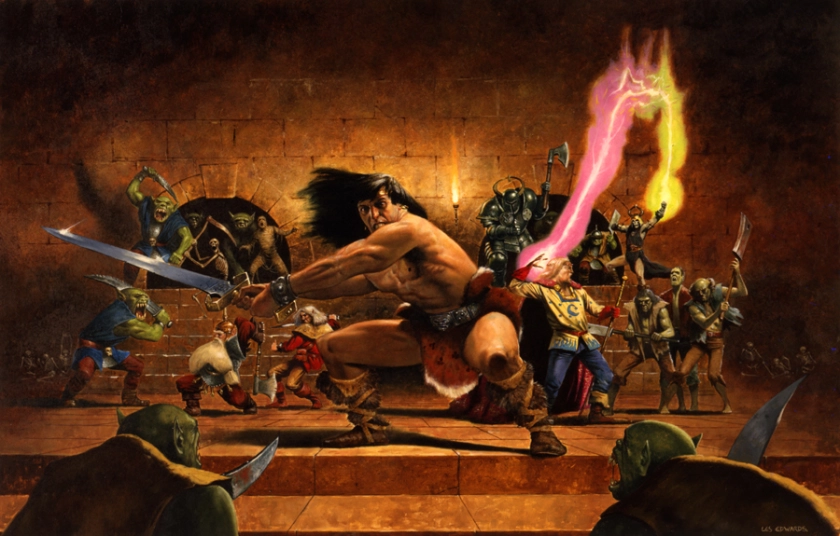There is no question that The Lord of the Rings is among the most influential literary works of all time, being the foundation upon which nearly all modern Fantasy has been built. There is also no question that one of the most memorable sections of the book is the Fellowship’s journey through the deserted, subterranean city of Moria. The atmosphere of Moria is palpable: miles of pitch-black passages buried deep beneath a mountain, echoing silence that serves as a constant reminder of the conspicuously absent Dwarven inhabitants, and the dreadful mystery of what hidden menace led to their downfall. The sequence culminates in the discovery of Balin’s Tomb and the Book of Mazarbul, which details the final days of the Dwarves occupation of the hall. What follows is surely the most exciting confrontation in all of Tolkien’s works: the initial conflict with the orcs and their cave-troll, the introduction of the Balrog, the flight to Khazad-dum, and the resulting loss of the Fellowship. But at the center of it all is the Tomb, a monument to a dead king forever lost within the mountain. It serves as a clear example of the potential doom that awaits those who adventure too far into the dark.
For this reason, the Tomb was the piece of furniture to which I looked forward to updating the most. Like the Bookcase and the Cabinet, the Tomb comes as a plastic top with a foldable cardboard insert for the sides. The first step in “improving” the piece was to replace the cardboard with scratchbuilt plastic components. This was accomplished with the use of sheet styrene, first creating a box upon which the original plastic top would seat, and then laminating details (such as the swords and nameplate) onto the sides.
The painting part of this project was a long slog. One of the major flaws of my painting style is that I have great difficulty producing random texture, such as woodgrain and stone. This meant that I spent hours placing cracks, chips, and color variation by hand… which got old very quickly. The nonmetallic portions of the gilded statue went much faster. I am especially proud of the decorative swords, as the blades are entirely flat with the fullers and bevels being optical illusions created by highlight and shadow.











Overall, I am very happy with how this piece turned out. I think the stone texture added a lot of visual interest and the non-metallic work is some of the best I have been able to accomplish. Next, it’s time to revisit that woodgrain that has given me so much trouble. Until then…
Stone:
A base coat was applied to the entire surface with a 1:1 mix of VMC Grey Green (70.866) and VGC Stonewall Grey (72.049). Next, thin layers were painted somewhat randomly with a mix of Stonewall Grey, Grey Green, VMC German Camo Beige WWII (70.821), and VMC German Camo Black Brown. The ratios of these colors were adjusted from layer to layer, but the mix was close to 2:1:2:1 of the colors respectively. Chips and cracks were highlighted with VMC Deck Tan (70.986).
Some color variation was introduced with the addition of VMC German Camo Pale Brown (70.825) and VMC U.S. Dark Green (70.893).
Black Metal:
A standard non-metallic metal approach was utilized with the following colors: VMC Black (70.950), VMC Black Grey (70.862), and VMC Ivory (70.918).
Steel:
A standard non-metallic metal approach was utilized with the following colors: VMC Black (70.950), VGC Cold Grey (72.050), and Schmincke Titanium White.



Very nice Tom! Can’t wait to play!
LikeLiked by 2 people